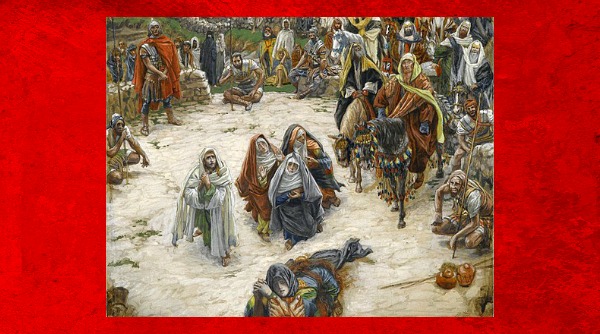Prayer is a process of continual inner conversion that involves gently trying to turn, open and surrender the heart to God. As the process is practiced, the heart of man is made accessible to the heart of God, and his love shafts down to purify and empty it so that Christ can come to birth again in all of us.
Keep Gently Trying
I don’t want to start hair-splitting, but I think it is very important to distinguish between what is the essence of prayer and what are the means to prayer. People are always asking me to advise them what method of prayer to adopt, or more usually to bless the prayer pattern that they have already adopted. Some people fritter away their lives searching for the spiritual equivalent of the Philosopher’s Stone, the magic formula for prayer which will infallibly lead to mystical contemplation, or to whatever other spiritual ‘goodies’ they have set their hearts on. The truth of the matter is there is no perfect means of prayer. There are just different means, to help us keep gently trying, to turn and open our hearts to the only One who can make us new. Methods and techniques of prayer are like props. Their purpose is to help a person to keep on loving, to keep turning back to God. If the rosary helps to do this, if the stations of the Cross, or some other devotional practice helps to do this, then that is fine. Others may find the slow meditative reading of the Scriptures helpful responding to them in their own heart-felt prayer, or by using ancient prayers like the ‘Jesus prayer.’ Or by saying prayers from the liturgy like the Gloria from the Mass or even the great Eucharistic prayers themselves saying them very slowly and prayerfully.
No Magic Formula
The important point to remember is there is no magic formula, no infallible method or technique. There are just hundreds of different ways of prayer to do one and the same thing. A means of prayer is good for you if it helps you, here and now, to keep gently turning your heart back to God. What might help you at the beginning of your spiritual journey may be of no use later on. What helps you in the morning might not help you in the evening. What helps you one minute might not help you the next. So please move from one method to another with complete freedom. Remember that these methods are only means. Beware of the ‘here today and gone tomorrow’ gurus who have a fixation about a particular means of prayer which they enjoin upon everybody without question as a panacea. They know nothing about the spiritual life. If they did they would know that methods of prayer change as people change and as prayer develops with the years. Remember the words of Dom John Chapman, ‘Pray as you can, not as you can’t’.
The Greatest Mystic
Let me now put the microscope upon the greatest mystic who has ever walked upon the face of this earth to catch him in the act of praying. Here we see yet again, this time even more clearly, the essential ingredients of authentic Christian prayer. At the end of his life, Jesus knew that his hour had come. He knew that in a short time he would be betrayed by one of his own. He would be dragged in front of the Jewish authorities to be accused of being a blaspheming liar. He was going to be dressed like a fool and paraded in front of that debauched dilettante, Herod. He was going to be stripped by the Romans, flogged literally within an inch of his life, dragged through the streets like a common criminal, and then hung up naked and bleeding, to die on a Roman gibbet. His humanity rebelled at the very thought of it; he was in desperate need and so now, in his hour of greatest need, he turned for help to his Father in prayer.
He goes into the garden ‘where it was his custom to pray’, and there throws himself down upon the ground to beg for the help and strength to remain steadfast to the end. Then he tries to turn and open himself to receive help and strength from his Father, but he is overwhelmed by a thousand and one distractions, taunted by temptations that threaten to come between him and the love of his Father. Where do the temptations come from? What is the source from which these temptations arise? They come from the memory, from the imagination, from the inner feelings that all batter upon the mind, bludgeoning it with blows that all but bring it into submission.
Firstly, his memory looks back over almost thirty years. How many times in those years did he come to Jerusalem? How many times did he approach other major cities in Palestine and see there on the rubbish tip outside the city gates slaves, criminals of every sort hung up on post and crossbeam, half flayed alive, slowly choking to death. Then his imagination comes into play as he begins to imagine that this will be happening to him the next day. He begins to realize more poignantly than ever the atrocious agony that he will have to endure at the hands of his own people, and before the loving gaze of those who love him most. He is bathed in blood, sweat, and tears, and his deepest feelings are aroused and they rise up to batter his mind, to beleaguer it with a thousand and one questions. Why, for what purpose? Or at least, why this way, and not another? The temptation to take a short cut that tested him in the desert, tests Him now to the limits of his endurance so that he begins to pray, ‘Father, that this chalice may pass away from me’. Then the Holy Spirit enables him to pray time and time again, ‘Not my will but your will be done’, until he becomes the prayer he makes, the will of God made flesh.
Real Prayer
This is real prayer. He relentlessly turned and opened himself to the Father, and was repeatedly emptied of every thought, word, and desire that stood in the way of the total surrender, that he made and re-made in that hallowed place. The angel of consolation who came to comfort and support him brought moments of light to his darkness, giving him the help and strength to go on surrendering himself in prayer. In the process of his final prayer, he was given the power and the strength to go out of that garden, to bring what he had preached to others to perfection in the final moments of his life on earth. What was learned with the heart in Gethsemane was put into practice with his whole being on Calvary. Now we can see the real meaning and inner nature of Christian prayer; see how it is the school in which the heart is trained, disciplined in the selflessness that leads us into the selfless sacrificial prayer of Jesus. It is the place where we learn to participate in his death and Resurrection. It is the place where true imitation leads to an identification that enables the Risen One to be present to the world through us.
With Love All Things are Possible
To follow Christ means to take up our daily Cross even if compared with his it is no more than a matchwood cross. In order to do this, we need to do what he did by turning to God our Father for help and strength as he did in Gethsemane. It is here in our prayer that we, like him, have to experience temptations and distractions as he did, but this must never put us off. Remember always that as we endlessly try to turn away from these obstacles they no longer become obstacles but the means by which we show our love for God by turning our hearts and minds back to him, no matter how powerful these distractions or temptations become. This is how our stumbling blocks become stepping stones, to receive the quality of love that only God can give us. This then is how the repentance that St Peter called upon us all to practice on the first Pentecost day is practiced over and over again. It enables us to be more and more open to receiving the same Holy Spirit whom he and his fellow apostles received moments before, eventually making all things possible. With love, all things are possible that were once quite impossible without it. Prayer then is the place whereby praying as Christ did in Gethsemane, we practice today what St. Peter called upon his listeners to practice almost 2,000 years ago.
The love that we continually express for God by turning away from temptations and distractions, by continually saying no to self and yes to God will enable his love to enter into us to do in us what is quite impossible without it. That is why St. Teresa of Avila said that you can’t pray without them! If God gives us profound experiences of his love in prayer to change us then that is his gift and his gift alone. Our part is to keep turning to him in prayer so that he can give us this gift of his love his Holy Spirit who can alone transform us into the image and likeness of his Son Jesus Christ. Come, Holy Spirit, fill the hearts of your faithful and enkindle in them the fire of your love. Send forth through them your Holy Spirit so that the world may be recreated’.
David Torkington is the author of Wisdom from the Western Isles, Wisdom from The Christian Mystics, and Wisdom from Franciscan Italy
Image credit: “What Our Lord Saw from the Cross” by James Tissot [Public domain], via Wikimedia Commons
This article is reprinted with permission from our friends at SpiritualDirection.com.













